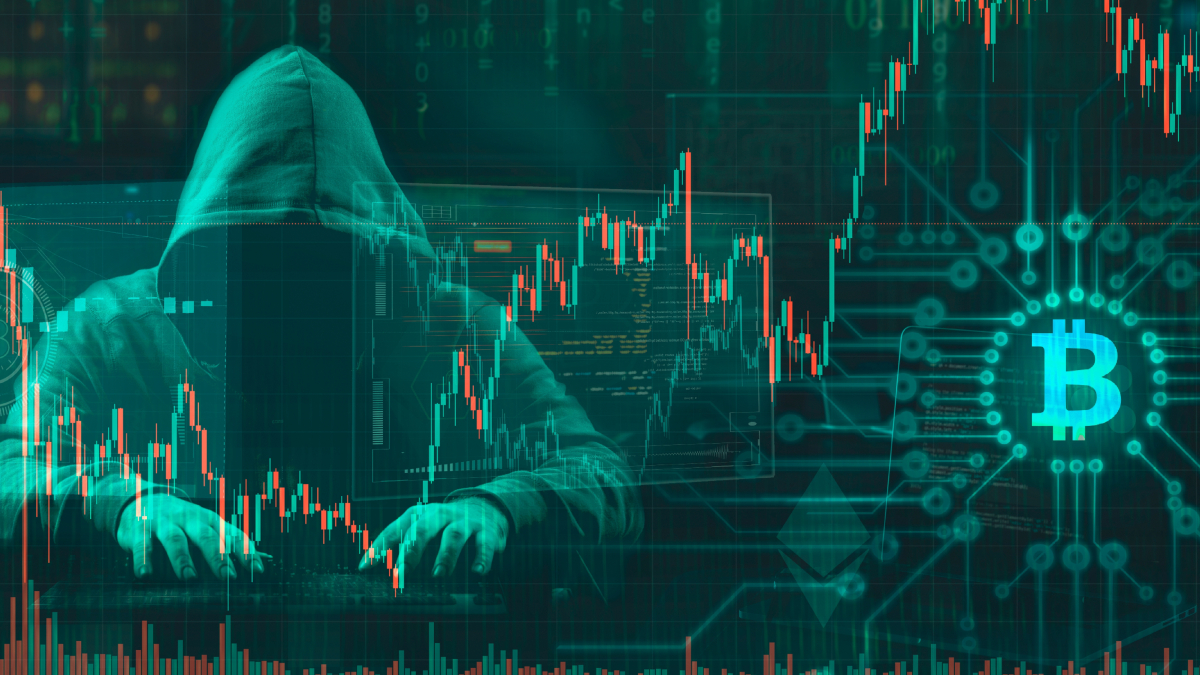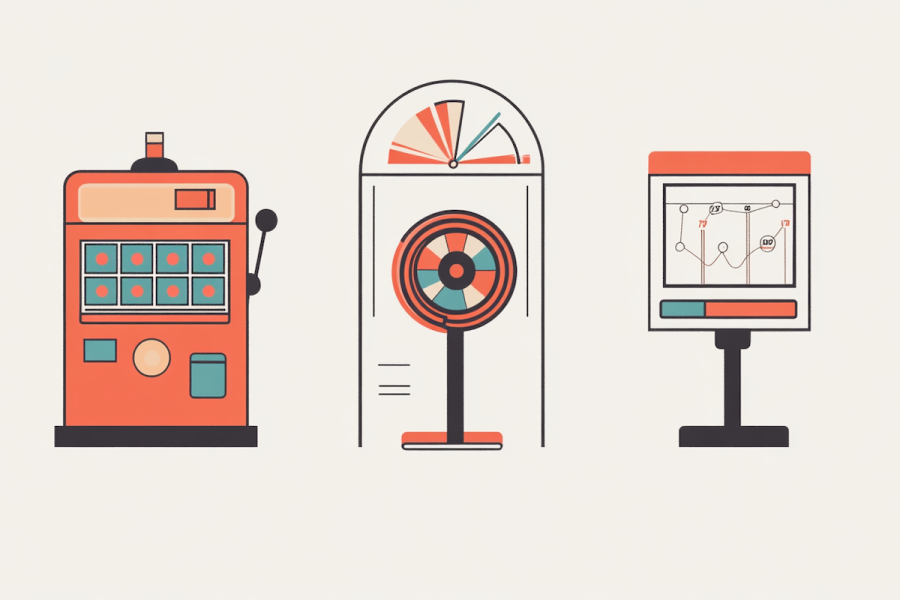How Tariffs Are Reshaping the Resale Market (and How to Make the Most of It)
Whether you're buying or selling, resale platforms are a potential haven in our post-tariff reality.

Whether you're buying or selling, resale platforms are a potential haven in our post-tariff reality.

Credit: James Martin
Today, like most days, I made a trip to the post office to ship out my Poshmark sales. But what I'm shipping out looks a little different than it might have a few months ago. Of the seven packages I'm handing off, only one contains an item I'd consider "nice." Alongside that Fendi top are six pieces from fast-fashion brands—ultra cheap stuff I ordered from Chinese retailers like Shein and Temu that, until recently, I never expected to actually sell, given that someone could buy the same item new at, well, Shein and Temu prices.
But since the United States' new tariff structure went into effect (primarily the elimination of the de minimus exemption), consumers have been forced to adjust to a reality in which they can't easily source everything from toothbrush holders to micro-trendy outfits from an low price Chinese retail giant, to say nothing of concerns over how much more they could be paying for pricier items like autos and appliances made with foreign parts or manufactured overseas.
In this period of uncertainty, resale apps may be filling the void. My own Poshmark sales are up compared to the month before the tariffs went into effect, with a notable rise in sales of basic, cheap stuff. Curious, I talked to a few experts to see if my experiences were indicative of a broader trend—one that could mean good things (well, relatively speaking) for resale buyers and sellers alike.
The vibe on the resale apps in the wake of tariffs
The rollout of the tariffs has been confusing and disjointed. It was (and still is) hard to predict when consumers will see price increases on foreign-made electronics, cars, and other goods, or on products assembled in the U.S. but made with imported parts. But from the start, it has been obvious that goods from China in particular were about to cost a whole lot more—including the volumes of stuff shipped directly to consumers from the likes of Temu and Shein, the latter of which is famous for uploading 10,000 new styles to its site every day (and for charging unbelievably low prices for all of them). Months ago, when the tariffs were first announced, people started wondering if they should start stocking up (and on what), whether they were importing cheap clothes from Shein or bracing for higher prices on more substantial goods like smartphones.
I've bought more than my share of junk from Shein, though I know it is not exactly a sustainable or environmentally friendly choice. To make myself feel better about that, I've always listed the clothes on resale apps once I'm done with them. To be clear, these are cheaply made garments—you don't buy your capsule wardrobe on Shein; Shein is where you shop for micro-trends (styles that are currently all over your Instagram and Pinterest feed, but which won't be in two months) or basics like tank tops that you can use and abuse. Prior to the tariffs rolling out, it was inconceivable that anyone would pay me $9 (plus shipping) for a pre-worn, cheaply-made dress or workout set that I had only paid $15 for in the first place—but that's what started happening.
In the past month, I've still sold clothing and accessories made by Adidas, Gucci, Skims, Ralph Lauren, Marc Jacobs, Reebok, and Givenchy, but those tend to be one-off sales. My Shein resales for the last four weeks absolutely dwarf them. I also sold a few electronics items—an Apple Watch and facial micro-current device—I had listed in my Poshmark shop months earlier. Could I chalk up all of these sales to tariffs, and to anxiety about impending price increases on electronics?

My Shein sales this month vs. everything else Credit: Lindsey Ellefson
Certainly I'm not alone in noticing it this trend. A Poshmark spokesperson tells me, "We’ve seen an increase in sales of internationally-made items, especially from brands that have announced price hikes due to high tariffs. Despite rising prices, demand for fast fashion remains strong as consumers seek trendy, affordable styles. Buying those pieces secondhand lets them stay on-trend while keeping clothing in circulation."
In addition to Shein and Temu, higher-priced brands that publicly announced tariff-related price increases have also seen resale spikes, with sales of Columbia button-down shirts surging by 61% month over month, and sales of Hermès sandals up 27%. Buying used Hermès sandals is one thing—not all of us have $840 laying around to spend on designer slides to ring in the summer. But a Columbia button-down? That's the kind of item I'm used to finding at Marshall's for maybe $30—but people now seem to be flocking to buy them used, worried that even cheap shirts will become relatively priceier due to tariffs.
Meanwhile, Poshmark reports sales on consumer electronics have increased as well: The week of April 27, resales of Sony products were up 22% month over month, and Apple products were up 21%. The times seem to be changing, and they're doing it in a hurry.
What tariffs means for resale shoppers
I am not only a resale seller, but a resale shopper, and the uncertainty around tariffs has made me a lot more discerning with what I'm buying new. Part of this is just that I'm now paying more attention. I love the leisure and athletic wear made by SET Active. I own a lot of it, and I have never before considered selling any of it because it lasts so long and maintains its shape so well. Until recently, I have also never paid much attention to where it is made: While SET Active designs its products in California, its active fabrics are all made in China. Prices haven't gone up on the official website yet, but in preparation for a time when they might, I've already started shopping the brand on Poshmark and Depop. It's not the worst thing in the world; buying used is both cheaper and more sustainable. I've always been an avid purchaser of resale goods—I've just never had to do it so strategically before.
(I've found it easier to give up Shein altogether—I can manage fine without the $4 tank tops I've been putting through absolute hell the past few summers—but my Poshmark customers have proven more reluctant to resist the allure of fast fashion, even used.)
I'm not alone in being more strategic with my resale purchases. Financial experts are noticing the same thing. "In the wake of the announcement and implementation of the tariffs, people have been looking for cheaper alternatives to the more expensive imported goods," says Aaron Razon, a personal finance expert at Couponsnake, "especially as many domestic products not only fall short in meeting the demand for certain products, but lack the variety and style that imported goods offer. [Domestic products] are also not exactly the cost-effective option consumers are looking for, and this is one of the major reasons interest in resale platforms [has] been on the increase."
Bill London, an international business attorney, points out that in addition to causing prices to rise, tariffs have resulted in potential shipping delays, a fact that has also contributed to, "a surge in second-hand fast fashion interest."
Six months ago, if you needed a certain kind of dress for, say, a themed bachelorette party, you could order it from Shein for $20, safe in the knowledge that you'd probably never wear it again. Today, its price could be closer to $30 or $40, and you might face delays in receiving it. The appeal of fast fashion was always in the low cost and convenience, provided you had 10 to 14 days to wait for the thing to arrive from China. Now, it just makes more sense to buy that dress from someone in the U.S. who likewise didn't see themselves rewearing it, —and now, they're selling it for roughly the same $20 they originally paid. For the buyer, it's still a relative deal, and it'll even arrive sooner.
It's not just fast fashion
Brands beyond Shein and Temu are seeing a lift. As the Poshmark rep pointed out, resales on select high-end brands are up, too. Buying used luxury goods has always been a smart financial decision (certainly it's a practice I've been dedicated to for a long time), but with manufacturing and importation costs an ever-murkier question, it's more sensible than ever.
A spokesperson for Vestiaire Collective, a designer resale platform, tells me that U.S. buyers are increasingly able to see the duties applied to their purchases from Europe and Asia at checkout, and that the company has been working to beef up its American foothold for years. That effort is now paying off in a big way thanks to tariffs: In 2022, VC acquired Tradesey to increase its selection of pre-owned fashion offering for U.S. buyers, and it ramped up associated brand marketing the following year. VC also curates a list of goods that are ready to ship from New York City, making it easier for American buyers to identify items that can easily come to them domestically, no tariffs or duties required. Consequently, the brand rep says VC has, "seen a shift of more U.S. buyers buying from U.S. sellers" lately.
Personally, I've noticed people buying from me lately, in particular, is workout attire. With the cost of everything going up, it might seem more of a stretch to pop into Lululemon to buy a new pair of leggings for over $100. Meanwhile, the trusty Shein alternative is now more money than its worth. It's this class of in-between necessities—things you don't need to survive, but may be a nice-to-have for your particular interests or lifestyle—that is a source of personal economic woe, and where resale can fill the gap. Whether you need new workout gear, a one-time wear outfit, a few basic pieces, or even a designer handbag, the reality of the post-tariff world is that you're almost certainly better off looking on resale apps before even considering buying new. (You certainly have options—I've assembled a rundown of my own favorite resale apps, including the goods you're most likely to find on each.)
What do you think so far?
What this trend means for resellers
I remain shocked that people who presumably would have once ordered their workout sets and summer shorts off Shein are filling the fast-fashion void by purchasing mine, but take it from me: If you have ever considered selling your old clothes or housewares, but figured what you have to offer is too basic, cheap, or plentiful to make the effort worth it, this is your moment. I used to have cheap goods and fast fashion listed on my resale accounts only because it helped keep my number of available listings up, which contributed to my profiles' reputation and lured in buyers for the pricier objects I actually expected to sell. Now, though, it's the cheap stuff that is really moving, and making me money. I've started reevaluating my closet and reconsidering what meets my threshold for "worth it" to list. Post-tariffs, everything is worth it to list.
As London puts it, "The tariffs have altered the way in which people do their shopping." It's still pretty early into the great American tariff experiment, but some brands commissioned surveys early on this year to see how people were planning to deal with cost increases and found that a major chunk of consumers indeed expected to rely more on resale.
ThredUp, another online resale platform, found that 59% of consumers reported that if apparel got more expensive, they'd look to more affordable options, like secondhand buying, and consumers planned to spend 34% of their apparel budget on secondhand items this year. And those figures are a lot higher for Millennials and Gen Z buyers: They reported planning to spend almost half their clothing budget on resale.
Data from Smartly, an online shopping rewards app, also shows that 50% of survey respondents planned to consider resale goods in the face of rising costs. This means that even for casual resellers or those new to the concept entirely, there are a lot of new prospective buyers, which can translate directly to quick sales. At a time when the cost of necessary goods is rising right alongside those in-between necessities, you can make extra cash by selling what you already have.

In general, my sales are way up month over month since tariffs went into effect in early May Credit: Lindsey Ellefson
Will the resale spike last?
I've been buying and selling on resale apps for years and have always had success finding cool stuff to buy as fast as I could get rid of my old clothing, accessories, and electronics. While I've definitely noticed a spike in my sales lately, that's not to say there wasn't demand before the tariffs were announced. If you're new to buying or selling on an app, don't worry that the bubble will burst and you'll have invested a bunch of time in listing your wares for nothing—even if and when the moment passes, reselling can still be a reliable way to make a little extra cash. (In the meantime, if you have a lot to sell and want to maximize your profits, download a cross-lister like Vendoo, which helps you easily list the same product across multiple marketplaces.)
Some experts do expect that things could cool down in the nearer term. "Whether the trend persists depends on a number of things, such as how long the tariffs are in effect and how buyers respond to costs," London says. "The resale market for the products is likely to continue expanding if the tariffs are maintained. The demand might plateau or divert towards quality goods or eco-friendly goods when buyers adapt."
Razon, meanwhile, thinks resale apps will continue to thrive, but that the interest in procuring cheaply-made things, like fast fashion, may wane. "Resale platforms have been on the good end of the recent tariff increases, especially with consumers looking for cheaper alternatives to imported goods," he says. "The truth is—though it may take consumers time to realize it—they will eventually come to appreciate better-quality goods. There is a great chance that consumers' interest in these lesser-quality goods will wear off as soon as they begin to adjust to the new economic reality."
That is to say, list your Shein, Temu, and Aliexpress stuff now while people are still mourning its loss, but also consider those more familiar brands that may also soon see price hikes. Take stock of your closet and do a bit of research to see where all your potential stock is made. Just like I'm worried my beloved SET Active attire is going to go up in price because it's made in China, consumers may soon find themselves wanting to source cheaper stuff from Nike, Adidas, Lululemon, Levi's, and more, as all of those companies manufacture a lot of their clothing overseas.
The resale platforms themselves are already anticipating that their digital products are going to get more valuable and stay valuable through (and beyond) the tariff era. Manish Chandra, Poshmark's founder and CEO, says, "As the landscape of tariffs and imports evolves, we believe the secondhand marketplace will become an increasingly valuable and cost-effective resource for American consumers. By shopping from Poshmark closets or starting their own, consumers are supporting sustainability and helping strengthen the American economy."
In other words, buying resale is another way of buying American, even if everything you're buying was made in India or China.
The Download Never miss a tech story
 Jake Peterson
Jake Peterson
Get the latest tech news, reviews, and advice from Jake and the team.
The Download Never miss a tech story. Get the latest tech news, reviews, and advice from Jake and the team.

 Tfoso
Tfoso 

































